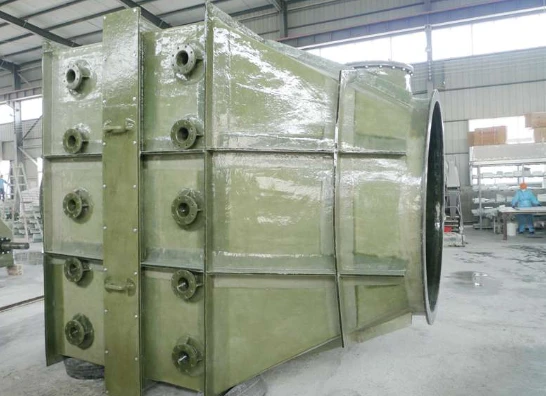
-
 Afrikaans
Afrikaans -
 Albanian
Albanian -
 Amharic
Amharic -
 Arabic
Arabic -
 Armenian
Armenian -
 Azerbaijani
Azerbaijani -
 Basque
Basque -
 Belarusian
Belarusian -
 Bengali
Bengali -
 Bosnian
Bosnian -
 Bulgarian
Bulgarian -
 Catalan
Catalan -
 Cebuano
Cebuano -
 China
China -
 China (Taiwan)
China (Taiwan) -
 Corsican
Corsican -
 Croatian
Croatian -
 Czech
Czech -
 Danish
Danish -
 Dutch
Dutch -
 English
English -
 Esperanto
Esperanto -
 Estonian
Estonian -
 Finnish
Finnish -
 French
French -
 Frisian
Frisian -
 Galician
Galician -
 Georgian
Georgian -
 German
German -
 Greek
Greek -
 Gujarati
Gujarati -
 Haitian Creole
Haitian Creole -
 hausa
hausa -
 hawaiian
hawaiian -
 Hebrew
Hebrew -
 Hindi
Hindi -
 Miao
Miao -
 Hungarian
Hungarian -
 Icelandic
Icelandic -
 igbo
igbo -
 Indonesian
Indonesian -
 irish
irish -
 Italian
Italian -
 Japanese
Japanese -
 Javanese
Javanese -
 Kannada
Kannada -
 kazakh
kazakh -
 Khmer
Khmer -
 Rwandese
Rwandese -
 Korean
Korean -
 Kurdish
Kurdish -
 Kyrgyz
Kyrgyz -
 Lao
Lao -
 Latin
Latin -
 Latvian
Latvian -
 Lithuanian
Lithuanian -
 Luxembourgish
Luxembourgish -
 Macedonian
Macedonian -
 Malgashi
Malgashi -
 Malay
Malay -
 Malayalam
Malayalam -
 Maltese
Maltese -
 Maori
Maori -
 Marathi
Marathi -
 Mongolian
Mongolian -
 Myanmar
Myanmar -
 Nepali
Nepali -
 Norwegian
Norwegian -
 Norwegian
Norwegian -
 Occitan
Occitan -
 Pashto
Pashto -
 Persian
Persian -
 Polish
Polish -
 Portuguese
Portuguese -
 Punjabi
Punjabi -
 Romanian
Romanian -
 Russian
Russian -
 Samoan
Samoan -
 Scottish Gaelic
Scottish Gaelic -
 Serbian
Serbian -
 Sesotho
Sesotho -
 Shona
Shona -
 Sindhi
Sindhi -
 Sinhala
Sinhala -
 Slovak
Slovak -
 Slovenian
Slovenian -
 Somali
Somali -
 Spanish
Spanish -
 Sundanese
Sundanese -
 Swahili
Swahili -
 Swedish
Swedish -
 Tagalog
Tagalog -
 Tajik
Tajik -
 Tamil
Tamil -
 Tatar
Tatar -
 Telugu
Telugu -
 Thai
Thai -
 Turkish
Turkish -
 Turkmen
Turkmen -
 Ukrainian
Ukrainian -
 Urdu
Urdu -
 Uighur
Uighur -
 Uzbek
Uzbek -
 Vietnamese
Vietnamese -
 Welsh
Welsh -
 Bantu
Bantu -
 Yiddish
Yiddish -
 Yoruba
Yoruba -
 Zulu
Zulu
fiberglass 90 degree elbow
Understanding Fiberglass 90 Degree Elbows Applications and Benefits
Fiberglass 90 degree elbows are vital components in various piping systems, offering an efficient means of directing flow in a right-angle turn. These fittings are particularly valuable in industries where the transportation of fluids or gases is necessary, such as in chemical processing, water treatment, and HVAC systems. The unique properties of fiberglass make these elbows suitable for a range of applications, providing durability, corrosion resistance, and improved flow characteristics.
One of the primary advantages of fiberglass is its inherent resistance to corrosion. Unlike metal pipes, which can rust and degrade over time when exposed to moisture or harsh chemicals, fiberglass maintains its integrity even in aggressive environments. This makes fiberglass 90 degree elbows an excellent choice for transporting corrosive fluids, including acids, alkalis, and other chemicals. Engineers selecting piping materials for their projects often prioritize longevity and maintenance needs, and fiberglass fittings help reduce the frequency and costs associated with repairs or replacements.
Another noteworthy benefit of fiberglass is its lightweight nature. Fiberglass 90 degree elbows are significantly lighter than their metal counterparts, such as those made from steel or iron. This reduced weight not only facilitates easier installation—often requiring less manpower and equipment for lifting—but also simplifies transportation and handling. Furthermore, lighter fittings can help decrease the overall weight of the piping system, potentially leading to savings in structural support requirements.
fiberglass 90 degree elbow

Additionally, the design of fiberglass 90 degree elbows provides excellent flow characteristics. The smooth internal surface of the fittings minimizes turbulence and allows fluids to flow more freely, which can enhance the overall efficiency of the system. Improved flow rates can lead to reduced energy consumption, particularly in pumping applications where minimizing resistance is crucial.
Ease of installation is another critical factor in favor of fiberglass fittings. The installation process for fiberglass piping systems can be simpler than that for traditional metal systems. The materials can often be joined using adhesive bonding, eliminating the need for welding or complex jointing techniques. This ease of assembly contributes to shorter project timelines and can reduce labor costs, making fiberglass a practical choice for both new installations and upgrades.
Fiberglass 90 degree elbows are also highly versatile, available in various sizes, diameters, and configurations to meet specific project requirements. Whether it's accommodating high-pressure systems or lower flow applications, there is likely a fiberglass elbow design suited to the task.
In conclusion, fiberglass 90 degree elbows represent a highly effective solution for engineers and contractors in diverse industries. Their corrosion resistance, lightweight attributes, excellent flow characteristics, and ease of installation make them a preferred choice for piping applications. As industries continue to evolve and seek materials that enhance performance while reducing maintenance and repair costs, fiberglass fittings will likely play an increasingly important role in the design and implementation of modern piping systems. Understanding and utilizing these components can lead to more efficient and sustainable operations across various sectors.









